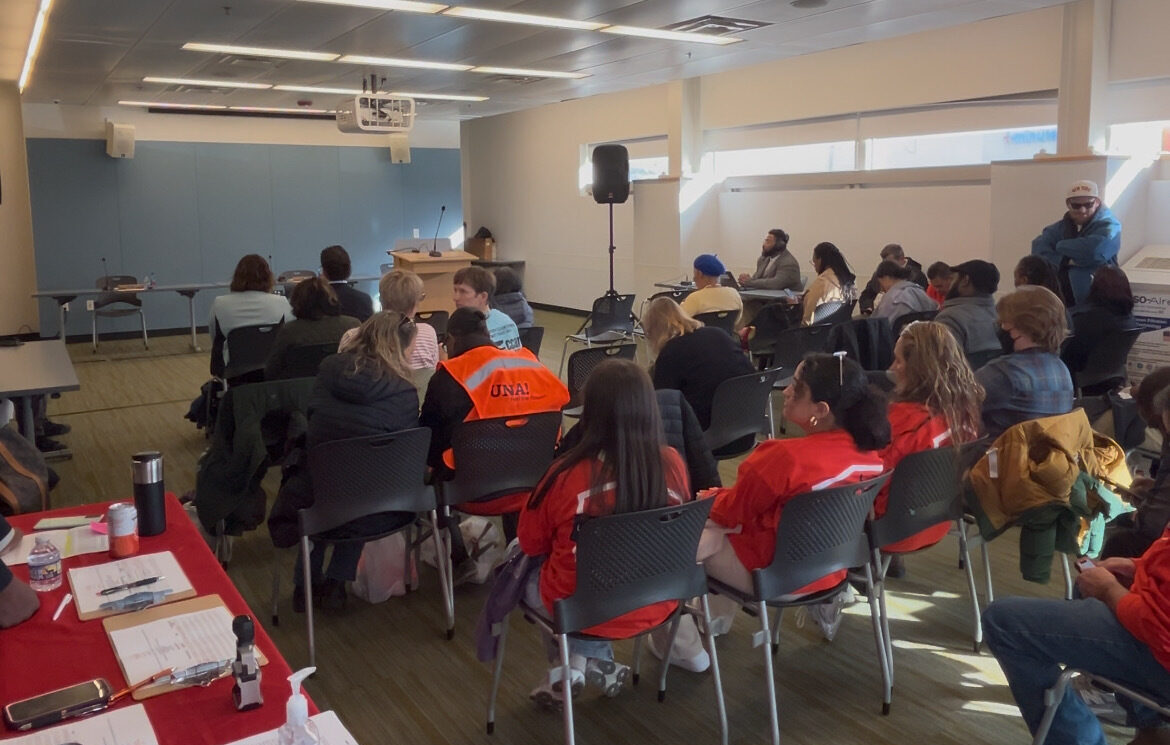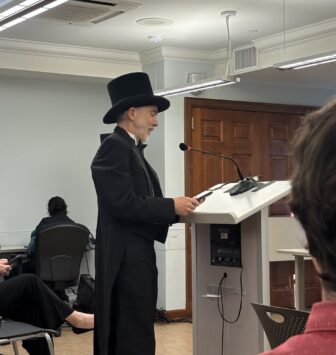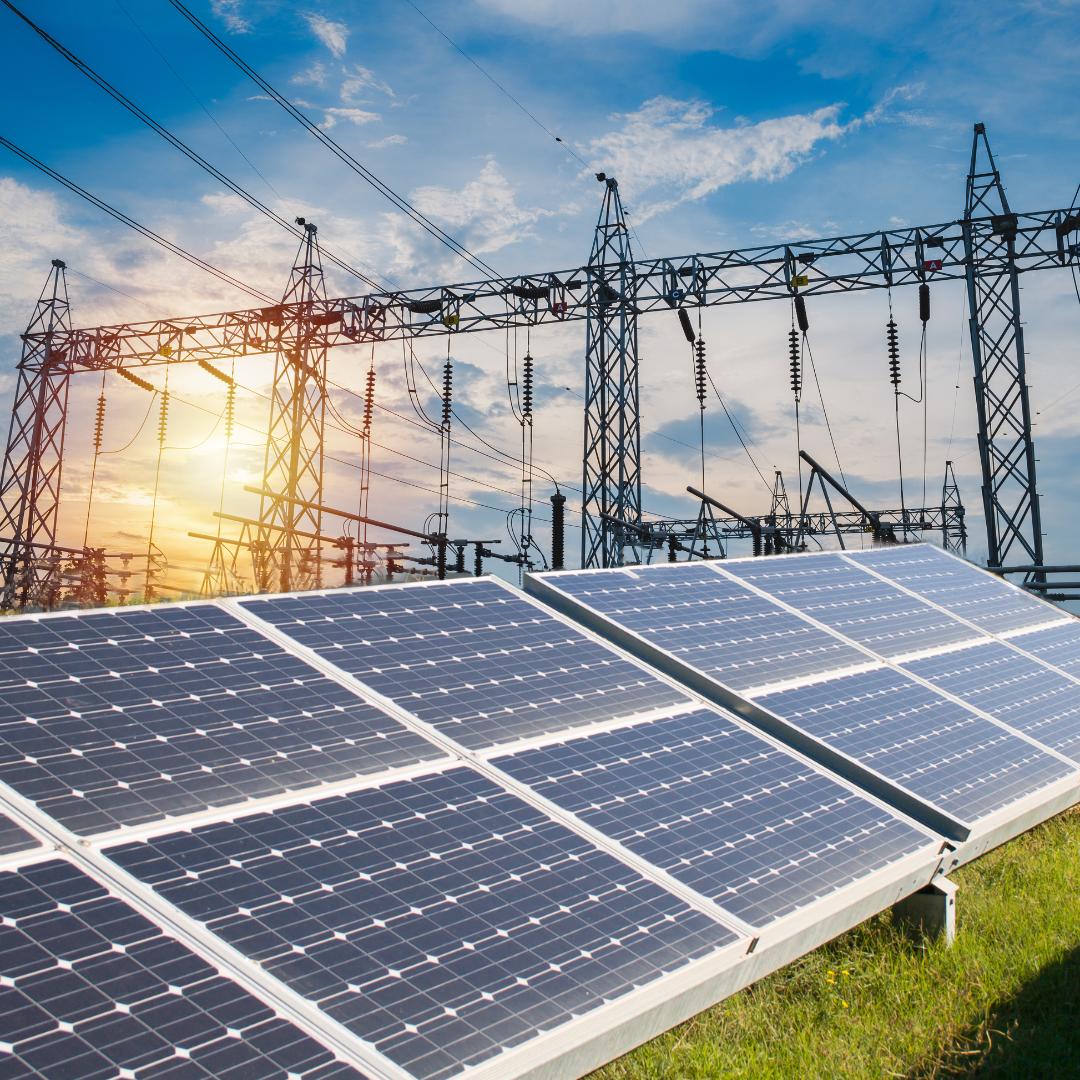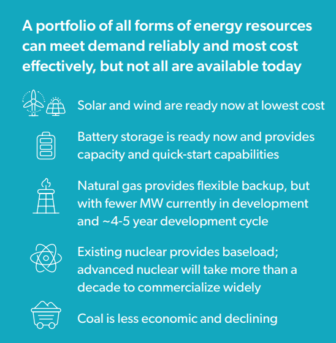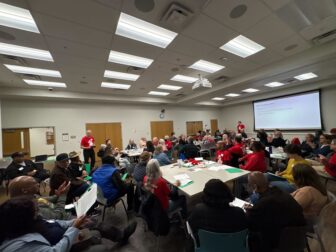CCAN joined parenting author Shannon Brescher Shea to host its first post-pandemic kid-focused event in Montgomery County to help parents talk to their children about climate change and how we can build a safe, sustainable future.
ROCKVILLE, MD — Dozens of Montgomery County families came together on Sunday, April 27, for a lively and educational Family Environmental Scavenger Hunt at Rockville Memorial Library. Parenting blogger and author Shannon Brescher Shea and Chesapeake Climate Action Network (CCAN) brought families together for a fun activity to teach children about protecting the earth and our climate. The goal: empowering the next generation to take action for a safer, more sustainable future.
Children accompanied by their families explored their community around Rockville Town Center in search of real-world examples of climate-forward practices, such as bike-friendly streets, urban gardens, and reusable mug-friendly stores. They also identified opportunities for improvements, including places dominated by car traffic or places that could be transformed into community green spaces.
“Depending on their age, some of our kids may not fully understand climate change, but they know when adults are worried,” said Shannon Brescher Shea, parenting author and blogger. “One of the best things we can do is show them that the people they trust the most – us – care and are taking action. Participating in activism as a family shows them that they, too, can take action and make a difference.”

Following the scavenger hunt, participants returned to the library to reflect on their findings. Children drew pictures of something positive they observed in Rockville and something they would like to change to better protect the environment. Kids were able to write shared notes on why safeguarding the climate matters to them, outlining the steps they hope their community will take for a better future.
“I know from my work and my own family’s experience that this kind of family education is incredibly important,” said Mustafa Abdullah, Director of Campaigns & Strategies at CCAN. “Several years ago, when the Canadian wildfires were raging and our air was filled with smog and pollutants, I had to put masks on my then two-year-old and 6-month-old to go outside. Once I put them in the stroller, I had to cover the stroller with protective plastic to then walk 15 minutes to their daycare.”
“The dramatic increase in wildfires, flooding, and other extreme weather events can be scary and overwhelming. And they are all consequences of the climate crisis. Our children will have to live with these consequences, so we need to teach them how to make our communities more resilient and adaptive to these conditions. I know anytime my child makes a mess, I ask for her to clean it up. It’s important to me that she sees me practicing that message both personally and in my activism – to see me asking that our elected officials and, more importantly, the polluters, clean up the mess they have made.”

This event highlighted the power of family engagement in climate activism and the importance of helping children see themselves as part of the solution. CCAN looks forward to hosting future events that continue to nurture environmental stewardship and resilience in Montgomery County’s youngest residents.
###
Chesapeake Climate Action Network is the first grassroots organization dedicated exclusively to raising awareness about the impacts and solutions associated with global warming in the Chesapeake Bay region. Founded in 2002, CCAN has been at the center of the fight for clean energy and wise climate policy in Maryland, Virginia, and Washington, DC.


